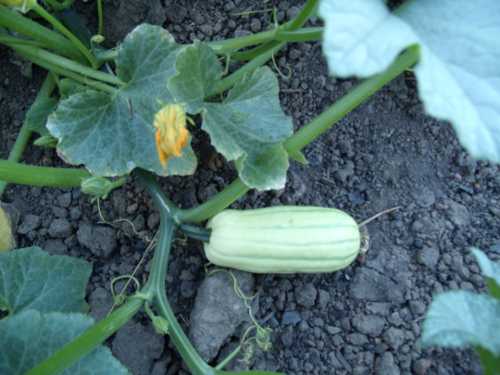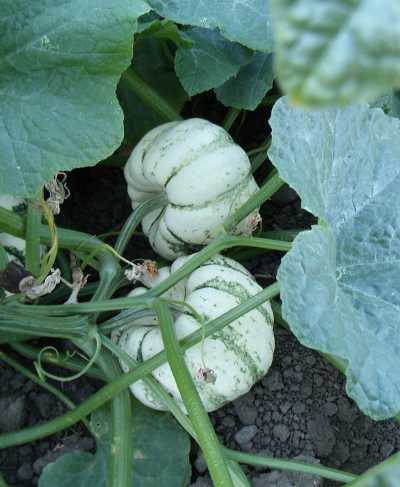
The rains are upon us, there’s a chill in the air and it’s time for the warm, hearty foods that nourish the soul.
I call this time of year my cooking season – it’s when I get most creative in the kitchen – and one of my favorite cool weather foods is the one which takes its name from the latter part of the season: winter squash.
Though winter squashes are planted in the summer, they’re harvested in their mature state, when the skin has hardened into a thick, protective rind. They’re available from August through March; however, they’re at their best in October and November when they’re in season.
They come in a plethora of colors, sizes and shapes, far more than what the typical local supermarket stocks. Unlike their summer relatives, such as zucchini and crookneck squash, they must be cooked before consuming.
We’re most familiar with pumpkins (which are members of the winter squash family) and acorn, butternut or spaghetti squash, but there are some lesser-known varieties.
Sweet dumpling squashes look like what their name suggests – round little dumplings – and their flesh is sweeter and drier than other squashes. The peel is soft enough to be eaten once cooked. Being fairly small, a half squash is equivalent to one portion. They’re typically pale yellow with orange stripes.
Kabocha squash (also known as Japanese squash or Japanese pumpkin) is a round, orange-fleshed squash with a deep green rind that has lighter green striations. Like sweet dumpling squashes, its flesh is sweeter and drier than other squashes. It tastes somewhat like sweet potatoes.
Hubbard squash has a bumpy, dark green rind that reminds me a bit of an avocado, though it has light green stripes. Its flesh is tasty, but its large size and extra thick rind makes it a bit difficult to handle.
The pumpkin-like golden nugget squash (also known as the oriental pumpkin) has a pleasant flavor, but has less flesh than most winter squashes. Like the Hubbard squash, its rind is thick and a bit difficult to cut.

Delicata squash, with its creamy flesh, is known to be one of the best tasting winter squashes. It’s long and oval shaped, with a light yellow rind that sports dark green horizontal bands. It’s sometimes called the sweet potato squash because of its taste. Choose squashes that are heavy for their size.
Squat, green buttercup squashes are known for their good taste, but may be a bit dry. Like delicata squash, they should be heavy for their size.
Long, large, smooth and yellow, banana squash are often sold in the market precut because of their size. The flesh is a rich golden color, which is beautiful as well as tasty.
Lastly (for purposes of this column) is the aptly named turban squash. With its dramatic two-tiered shape and bright colors, it makes a fantastic centerpiece. Unfortunately, its taste is not as interesting as its presentation, so it’s best used for decoration. When hollowed out, it makes for a nice soup tureen.
The variation in color, shape, size and skin type (grooved, smooth or bumpy) of winter squashes is almost unimaginable. To me, nothing says autumn more than a pile of these bright beauties, whether in a farmers’ field or the local market.
Squash is a member of the same family as melons and cucumbers and has been consumed by man for more than 10,000 years.
Today’s squashes are descendants of the wild squash that originated in an area between Mexico and Guatemala. This ancestor of modern squashes was initially cultivated for its seeds, as there was very little flesh and it was bitter.
Winter squashes are a veritable treasure trove of nutrients, with excellent stores of vitamin A, vitamin C, a variety of B vitamins, potassium, dietary fiber, and omega-3 fatty acids. As well, they contain an abundance of beta-carotene, which has antioxidant and anti-inflammatory properties.
Because of its thick skin, winter squash typically has a fairly long shelf life and, depending on the variety, can be stored for as long as six months. If picked fresh from the garden or the farmers’ field, the flavor continues to develop for about a month.
Today’s recipe offering is a duet of soups made with one of my favorite go-to winter squashes, butternut. The golden brown, pear-shaped butternut squash has deep orange flesh that adds a rich, buttery, earthy flavor to dishes made with it.
Both soups are made with pears, and I would suggest hurrying to find locally grown pears before they’re gone. Otherwise, supermarket pears will do just fine.
Farmers’ markets are winding down with this Wednesday and Saturday being the last for markets in Lakeport and Kelseyville, respectively, but winter squashes can be purchased directly from local farmers.
Sky Hoyt Specialty Growers of Kelseyville has grown a generous amount of butternut squash this year, and Leonardis Organics, also of Kelseyville, has the last of various interesting types of squash on hand. Hoyt can be reached at 707-279-0859 and call 707-483-4004 for Leonardis.
The first soup includes bacon, a nice accompaniment for winter squash, and the second one is a vegetarian version flavored with crispy sage. Enjoy!
Butternut squash soup with Lake County pears and bacon
6 strips bacon, chopped
1 medium onion, peeled and chopped
4 cups chicken broth
4 cups peeled butternut squash cubes (about 1 small to medium squash)
3 large Lake County pears, such as Comice or Bartlett, peeled, cored and cubed
¾ cup chopped celery (3 – 4 ribs)
1 teaspoon Herbs de Provence
1 cup half and half
Salt and freshly ground pepper to taste
Fresh thyme – use whole sprigs or coarsely chopped leaves for garnish
Sauté bacon in large stockpot until crisp, then remove to drain on paper towel.
Remove all but 1 tablespoon bacon grease from pot; add onion and sauté over medium heat until browned.
Add broth, squash, pears and celery to pot. Bring to boil, then reduce heat and simmer, covered, for about 30 minutes, until quite tender.
Let cool slightly, then puree mixture until smooth with an immersion blender or in a food processor or blender.
Return back to pot and add herbs and bacon. Simmer for 10 minutes more.
Stir in half and half and season to taste with salt and pepper, if desired.
Ladle into bowls and garnish with thyme sprigs or leaves.
Butternut squash and pear soup with crispy sage
2-3 tablespoons salted butter
A healthy handful of whole, fresh sage leaves (enough to garnish each bowl, plus ten or so leaves for soup)
1-2 tablespoons olive oil (if needed)
1 medium onion, peeled and chopped
4 cups vegetable broth
4 cups peeled butternut squash cubes (about 1 small to medium squash)
3 large Lake County pears, such as Comice or Bartlett, peeled, cored and cubed
¾ cup chopped celery (about 2 ribs)
1 cup half and half
Salt and freshly ground pepper to taste
Melt butter in large stock pot, allowing it to brown.
Add sage leaves and sauté until crisp. Remove leaves from pot with tongs and set aside.
Add onion (and olive oil, if needed) and sauté over medium heat until browned.
Add broth, squash, pears and celery to pot. Bring to boil, then reduce heat and simmer, covered, for about 30 minutes, until quite tender.
Let cool slightly, then add about ten sage leaves and puree mixture until smooth with an immersion blender or in a food processor or blender.
Return back to pot and simmer for 10 minutes more. Off heat, stir in half and half and season to taste with salt and pepper.
Ladle into bowls and garnish each with a crispy sage leaf.
Esther Oertel, the "Veggie Girl," is a personal chef and culinary coach and is passionate about local produce. Oertel owns The SageCoach Personal Chef Service and teaches culinary classes at Chic Le Chef in Hidden Valley Lake, Calif., and The Kitchen Gallery in Lakeport, Calif. She welcomes your questions and comments; e-mail her at This email address is being protected from spambots. You need JavaScript enabled to view it..
Follow Lake County News on Twitter at http://twitter.com/LakeCoNews and on Facebook at http://www.facebook.com/pages/Lake-County-News/143156775604?ref=mf .
